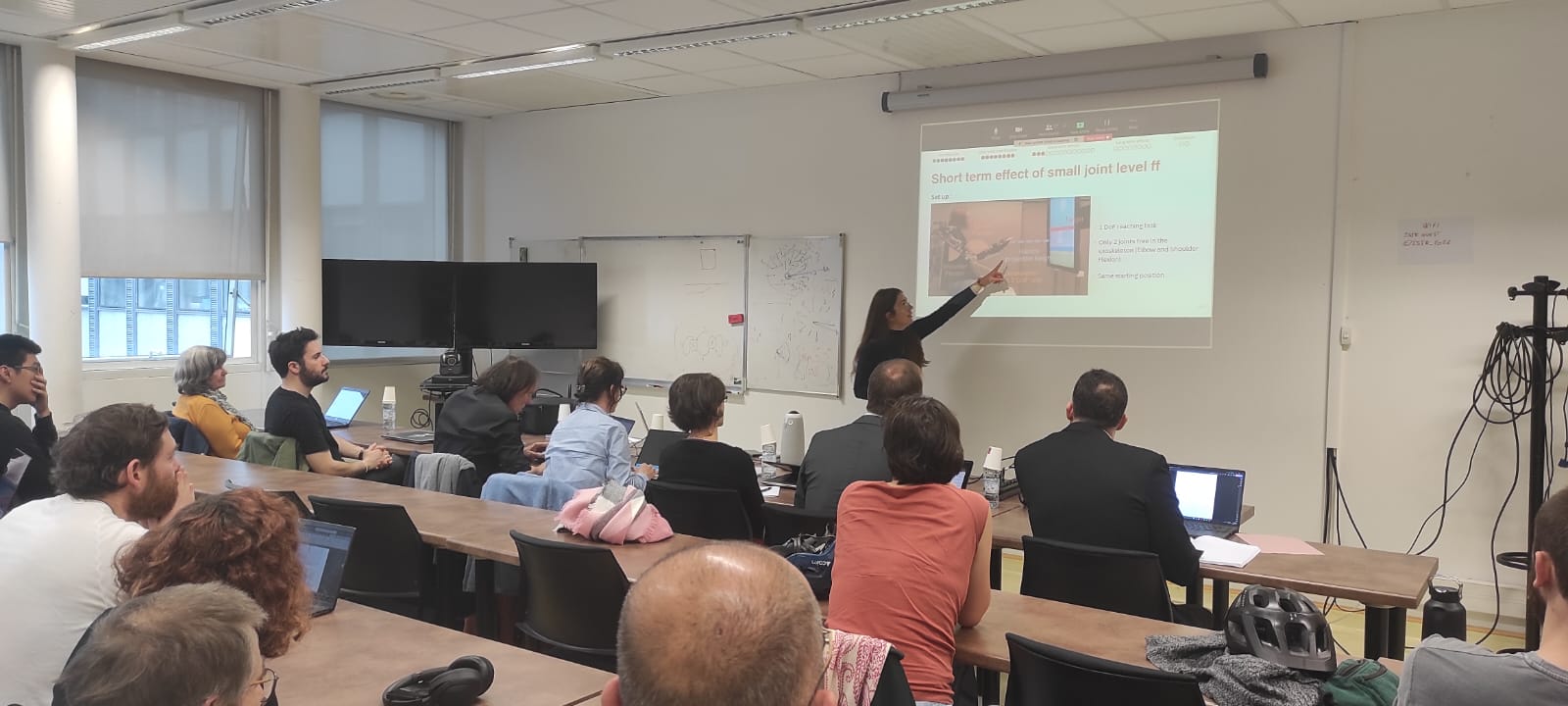PhD defense
I defended my Phd, entitled “Characterizing the after-effects of wearing an upper-limb exoskeleton on inter-joint coordination”, and supervised by Nathanaël Jarrassé on the 26th of November 2024
The jury was composed of:
- Jan Babic (Reviewer): Professor, Jozef Stefan Institute, Ljubljana, Slovenia
- Bruno Watier (Reviewer): Professor, LAAS, University of Toulouse III, Toulouse
- Catherine Achard (Examiner): Professor, ISIR, Sorbonne University, Paris
- Lorenzo Masia (Examiner): Professor, MIRMI, Technical University of Munich, Germany
- Pauline Maurice (Examiner): CNRS Researcher, LORIA, University of Lorraine, Nancy
- Nathanaël Jarrassé (Thesis Director): CNRS Research Director, ISIR, Sorbonne University, Paris
- Agnès Roby-Brami (Advisor): INSERM Research Director, ISIR, Sorbonne University, Paris
Summary:
There is growing interest in assistive robotics, particularly wearable devices such as exoskeletons. These systems interact not only with the user’s hands in task space but also with their limbs in joint space to provide optimal support. However, while the effects of robotic interactions on the hand have been widely studied, joint-level perturbations remain poorly understood. The complexity of studying such interactions lies in the redundancy of the human body: the same task-space movement (e.g., hand displacement) can be achieved using different combinations of joint movements (shoulder, elbow, wrist).
This thesis aims to advance our understanding of human adaptation to wearing an exoskeleton by addressing the following question: How does repeated exposure to joint-level perturbations affect human inter-joint coordination after the exposition ?
Beyond developing metrics to evaluate inter-joint coordination, this work investigates the short- and long-term impacts (over five days) of low-intensity force fields (e.g., viscous, decreased gravity) generated by an exoskeleton. Natural movements (before exposition) are compared to those performed after exoskeleton use to assess changes and retention of coordination patterns.
Initial results reveal that joint-level perturbations modify inter-joint coordination without compromising end-effector performance. Prolonged exposure induces durable motor adaptations and the emergence of new coordination strategies.

Enjoy Reading This Article?
Here are some more articles you might like to read next: